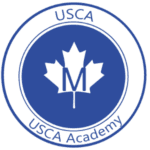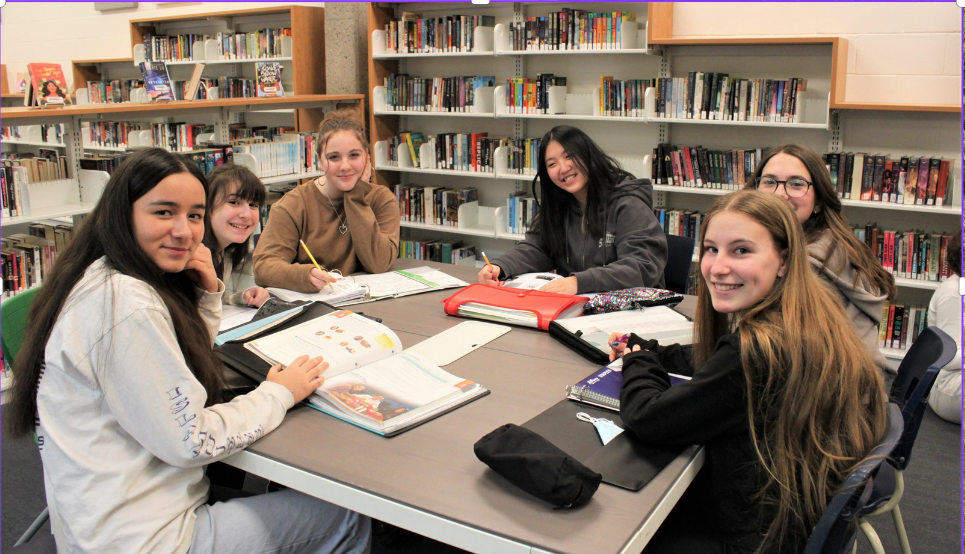| Course Type: | University Preparation |
| Credit Value: | 1.0 |
| Prerequisite: | Any Grade 11 or 12 university (U) or university/college (M) preparation course in Social Sciences and Humanities, English, or Canadian and World Studies |
Course Description
Canadian and International Law: This course explores a range of contemporary legal issues and how they are addressed in both Canadian and international law. Students will develop an understanding of the principles of Canadian and international law and of issues related to human rights and freedoms, conflict resolution, and criminal, environmental, and workplace law, both in Canada and internationally. Students will apply the concepts of legal thinking and the legal studies inquiry process, and will develop legal reasoning skills, when investigating these and other issues in both Canadian and international contexts.
Outline of Course Content
Unit
Titles and Descriptions
Time and Sequence
Unit 1
Legal Foundations
Students will learn of the basic concepts of law and take into consideration their significance. They will also study how legal theories and procedures have influenced Canadian and international legal systems. And, the influences of individuals and groups on the development of law will be analyzed.
24 hours
Unit 2
Rights and Freedoms
The factors and principles that form the foundation of human rights laws will be studied at the beginning of this unit. And the legal significance of those law will be focused on. Analysis of issues related the development of human rights law will be done. A comparison of the roles of the legislative and judicial branches of the government and how they protect human rights and freedom shall be conducted. Lastly, an analysis of contemporary issues and their impacts on human rights law will be made.
21 hours
Unit 3
International and Legal Issues
An analysis of important concepts, legal systems, and issues in criminal law will serve as the first part of this unit. Students will also analyze factors that influence environmental legislation. They will also analyze legal principles, systems and processes used to protect parties’ interests. And they will study global issues and their implications for international law.
30 hours
Unit 4
Foundations of International Law and Dispute Resolution
Students will explain the legal importance of various key principles and issues in international law; analyze how various factors have influenced the development of international law; analyze how various agreements, treaties, and conventions in international law influence international conflict and cooperation.
21 hours
Unit 5
Summative Project
The overall goal of this unit is for students to bring together their skills and knowledge learned throughout this course to write a well-argued, MLA-style, academic essay on an individually-selected topic through independent research. Students will choose their own topic and form their thesis and form their arguments based on the content of this course. They are encouraged to consider the historical, cultural, political, and sociological contexts of their issue while maintaining a legal perspective.
20 hours
Total
110 hours
Effective instruction is key to student success. To provide effective instruction, teachers need to consider what they want students to learn, how they will know whether students have learned it, how they will design instruction to promote the learning, and how they will respond to students who are not making progress.
When planning what students will learn, teachers identify the main concepts and skills described in the curriculum expectations, consider the contexts in which students will apply the learning, and determine students’ learning goals.
Instructional approaches should be informed by the findings of current research on instructional practices that have proved effective in the classroom. For example, research has provided compelling evidence about the benefits of the explicit teaching of strategies that can help students develop a deeper understanding of concepts. Strategies such as “compare and contrast” (e.g., through Venn diagrams and comparison matrices) and the use of analogy give students opportunities to examine concepts in ways that help them see what the concepts are and what they are not. Although such strategies are simple to use, teaching them explicitly is important in order to ensure that all students use them effectively.
A well-planned instructional program should always be at the student’s level, but it should also push the student towards his or her optimal level of challenge for learning, while providing the support and anticipating and directly teaching the skills that are required for success.
An understanding of students’ strengths and needs, as well as of their backgrounds and life experiences, can help teachers plan effective instruction and assessment. Teachers continually build their awareness of students’ learning strengths and needs by observing and assessing their readiness to learn, their interests, and their learning styles and preferences. As teachers develop and deepen their understanding of individual students, they can respond more effectively to the students’ needs by differentiating instructional approaches – adjusting the method or pace of instruction, using different types of resources, allowing a wider choice of topics, even adjusting the learning environment, if appropriate, to suit the way their students learn and how they are best able to demonstrate their learning. Unless students have an Individual Education Plan with modified curriculum expectations, what they learn continues to be guided by the curriculum expectations and remains the same for all students.
Effective lesson design involves several important elements. Teachers engage students in a lesson by activating their prior learning and experiences, clarifying the purpose for learning, and making connections to contexts that will help them see the relevance and usefulness of what they are learning. Teachers select instructional strategies to effectively introduce concepts, and consider how they will scaffold instruction in ways that will best meet the needs of their students. At the same time, they consider when and how to check students’ understanding and to assess their progress towards achieving their learning goals. Teachers provide multiple opportunities for students to apply their knowledge and skills and to consolidate and reflect on their learning. A three-part lesson design (e.g., “Minds On, Action, and Consolidation”) is often used to structure these elements.
Instruction in Grade 11 and 12 Canadian and world studies should help students acquire the knowledge, skills, and attributes they need in order to achieve the curriculum expectations and to be able to think critically throughout their lives about issues related to economics, geography, history, law, and politics. Effective instruction motivates students and instils positive habits of mind, such as curiosity and open-mindedness; a willingness to think, question, challenge, and be challenged; and an awareness of the value of listening or reading closely and communicating clearly. To be effective, instruction must be based on the belief that all students can be successful and that learning in Canadian and world studies is important and valuable for all students.
Students’ views of and attitudes towards Canadian and world studies can have a significant effect on their achievement of expectations. When students believe that these subjects simply represent a body of preordained knowledge about certain topics, they may question the relevance of their studies or may not approach their investigations with an open and inquiring mind. Students must be given opportunities to see that inquiry is not just about finding what others have found, and that they can use the inquiry process not only to uncover knowledge but also to construct understandings and develop their own positions on issues. Learning should be seen as a process in which students monitor and reflect on the development of their knowledge, understandings
Assessment is a systematic process of collecting information or evidence about student learning. Evaluation is the judgment we make about the assessments of student learning based on established criteria. The purpose of assessment is to improve student learning. This means that judgments of student performance must be criterion-referenced so that feedback can be given that includes clearly expressed next steps for improvement.
The assessment will be based on the following processes that take place in the classroom:
| Assessment FOR Learning | Assessment AS Learning | Assessment OF Learning |
|---|---|---|
During this process the teacher seeks information from the students in order to decide where the learners are and where they need to go. | During this process the teacher fosters the capacity of the students and establishes individual goals for success with each one of them. | During this process the teacher reports student’s results in accordance to established criteria to inform how well students are learning. |
| Conversation | Conversation | Conversation |
Classroom discussion Self-evaluation Peer assessment | Classroom discussion Small group discussion Post-lab conferences | Presentations of research Debates |
| Observation | Observation | Observation |
| Drama workshops (taking direction) Steps in problem solving | Group discussions | Presentations Group Presentations |
| Student Products | Student Products | Student Products |
| Reflection journals (to be kept throughout the duration of the course) Check Lists Success Criteria | Practice sheets Socrative quizzes | Projects Poster presentations Tests In Class Presentations |
Tools of varying complexity are used by the teacher to facilitate this. For the more complex evaluations, the criteria are incorporated into a rubric where levels of performance for each criterion are stated in language that can be understood by students.
Strategy | Purpose | Who | Assessment Tool |
Self Assessment Quizzes | Diagnostic | Self/Teacher | Marking scheme |
Homework check | Diagnostic | Self/Teacher | Checklist |
Teacher/Student Conferencing | Assessment | Self/Teacher | Anecdotal records |
Investigations | Assessment | Self/Teacher | Checklist |
Problem Solving | Evaluation | Teacher | Marking scheme |
Unit Tests | Evaluation | Teacher | Marking scheme |
Final Exam | Evaluation | Teacher | Checklist |
Assessment is embedded within the instructional process throughout each unit rather than being an isolated event at the end. Often, the learning and assessment tasks are the same, with formative assessment provided throughout the unit. In every case, the desired demonstration of learning is articulated clearly and the learning activity is planned to make that demonstration possible. This process of beginning with the end in mind helps to keep focus on the expectations of the course as stated in the course guideline. The evaluations are expressed as a percentage based upon the levels of achievement.
The evaluation of this course is based on the four Ministry of Education achievement categories of knowledge and understanding (25%), thinking (25%), communication (25%), and application (25%). The evaluation for this course is based on the student’s achievement of curriculum expectations and the demonstrated skills required for effective learning.
The percentage grade represents the quality of the student’s overall achievement of the expectations for the course and reflects the corresponding level of achievement as described in the achievement chart for the discipline.
A credit is granted and recorded for this course if the student’s grade is 50% or higher. The final grade for this course will be determined as follows:
- 70% of the grade will be based upon evaluations conducted throughout the course. This portion of the grade will reflect the student’s most consistent level of achievement throughout the course, although special consideration will be given to more recent evidence of
- 30% of the grade will be based on final summative evaluation administered at or towards the end of the This evaluation will be based on evidence from one or a combination of the following: an examination, a performance, an essay, and/or another method of evaluation suitable to the course content. The final evaluation allows the student an opportunity to demonstrate comprehensive achievement of the overall expectations for the course.
Resources: All About Law: Exploring the Canadian Legal System, Sixth Edition © 2010


